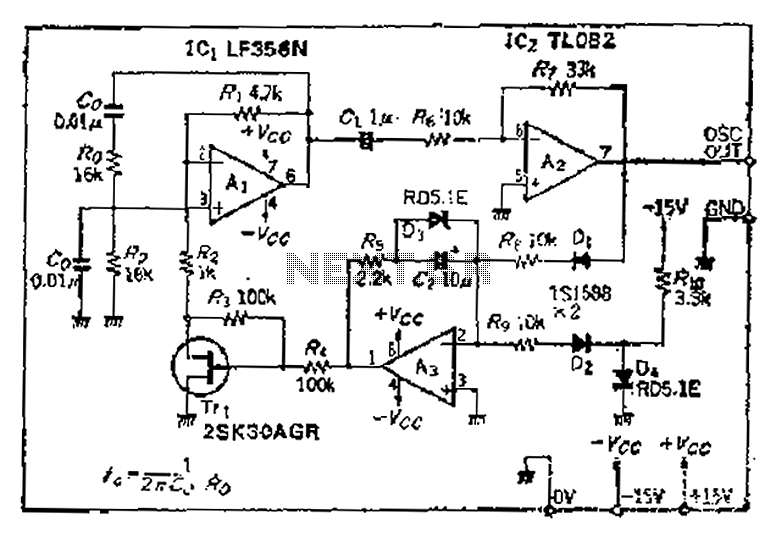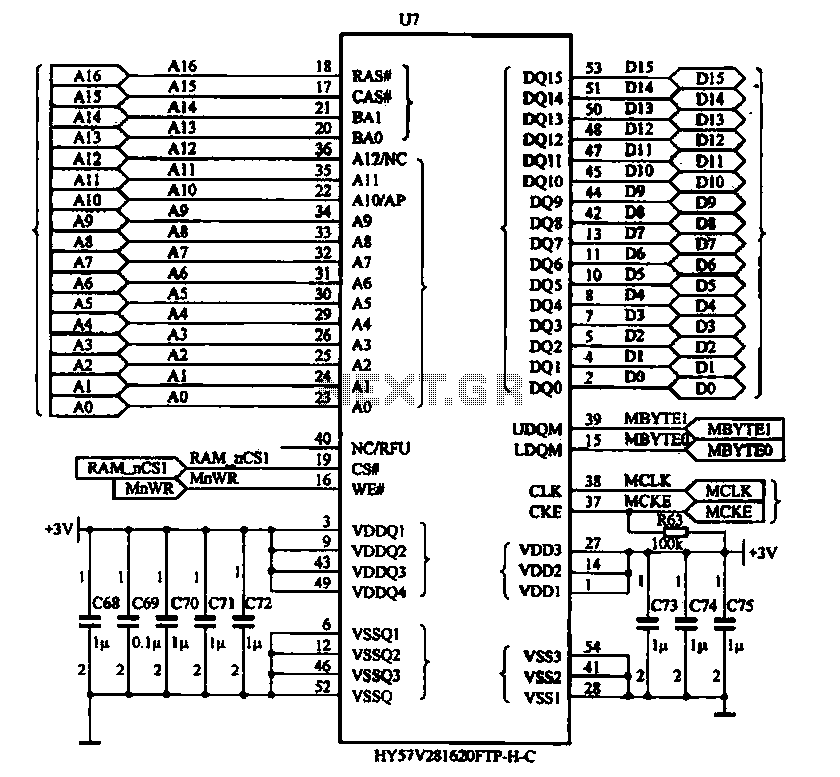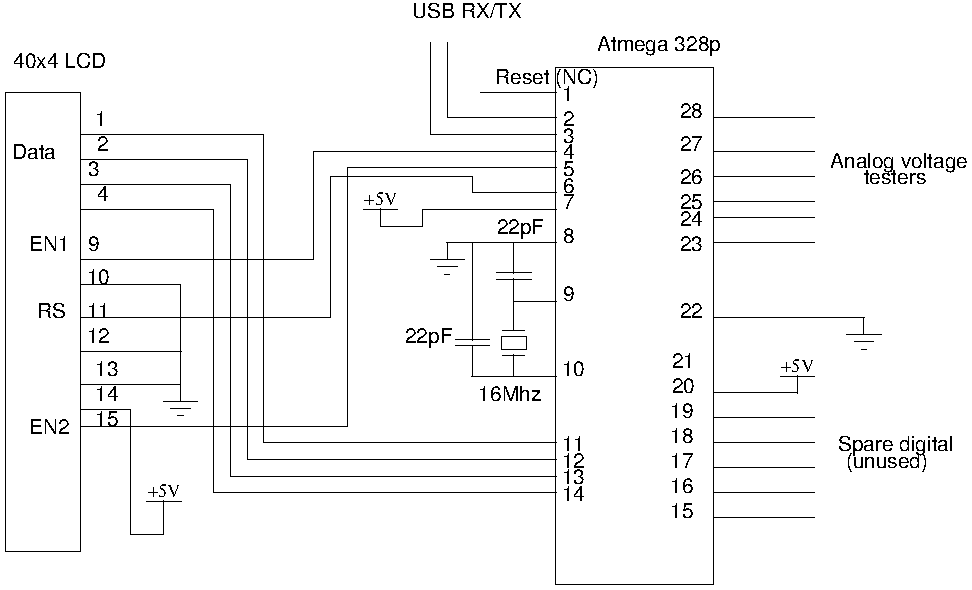
And put the intermodal server preamplifier circuit diagram

The intermodal servo preamplifier circuit operates at 115V and 60Hz, designed to provide a differential output for a servo motor amplifier. It features an inverting connection using an operational amplifier (op-amp), along with an additional op-amp configured to create a complementary output circuit. The voltage gain of this circuit is 40dB and utilizes a single regulator for the power supply. It incorporates a depth DC negative feedback circuit, ensuring good DC stability. The bandwidth is 60kHz, and the input is driven by a 90-degree phase shifter.
The intermodal servo preamplifier circuit is a crucial component for enhancing the performance of servo motor systems. The design includes a differential output, which is essential for minimizing noise and improving signal integrity, particularly in applications requiring high precision. The use of an inverting op-amp configuration allows for effective signal inversion, which is beneficial in many feedback systems.
The complementary output circuit formed by the second op-amp is designed to improve the overall performance of the amplifier by providing a balanced output. This configuration can help to drive loads more effectively and can enhance the linearity of the output signal.
With a voltage gain of 40dB, the circuit is capable of significantly amplifying small input signals, making it suitable for applications where input signals are weak. The single regulator power supply simplifies the design and reduces the likelihood of power supply noise affecting the circuit's operation.
The inclusion of a depth DC negative feedback circuit is a key feature that enhances the stability of the amplifier. This feedback mechanism helps to maintain a consistent output even when input conditions vary, thus improving the overall reliability of the system.
The specified bandwidth of 60kHz indicates that the circuit can handle a wide range of frequencies, making it versatile for various applications. The input driven by a 90-degree phase shifter allows for phase adjustments that can be critical in certain control systems, ensuring that the output is precisely aligned with the desired signal characteristics.
Overall, this intermodal servo preamplifier circuit is designed with precision and stability in mind, making it an ideal choice for advanced servo motor control applications.Adopt and put the intermodal servo preamplifier circuit as shown, the circuit is 115V, 60Hz servo motor amplifier provides a differential output. An op amp inverting connection , another op amp connected to form a complementary output circuit. The voltage gain of the circuit is 40dB, a single regulator regulated power supply. Depth DC negative feedback circuit, having a good DC stability. Bandwidth of 60KHz, input by the 90 phase shifter drive.
The intermodal servo preamplifier circuit is a crucial component for enhancing the performance of servo motor systems. The design includes a differential output, which is essential for minimizing noise and improving signal integrity, particularly in applications requiring high precision. The use of an inverting op-amp configuration allows for effective signal inversion, which is beneficial in many feedback systems.
The complementary output circuit formed by the second op-amp is designed to improve the overall performance of the amplifier by providing a balanced output. This configuration can help to drive loads more effectively and can enhance the linearity of the output signal.
With a voltage gain of 40dB, the circuit is capable of significantly amplifying small input signals, making it suitable for applications where input signals are weak. The single regulator power supply simplifies the design and reduces the likelihood of power supply noise affecting the circuit's operation.
The inclusion of a depth DC negative feedback circuit is a key feature that enhances the stability of the amplifier. This feedback mechanism helps to maintain a consistent output even when input conditions vary, thus improving the overall reliability of the system.
The specified bandwidth of 60kHz indicates that the circuit can handle a wide range of frequencies, making it versatile for various applications. The input driven by a 90-degree phase shifter allows for phase adjustments that can be critical in certain control systems, ensuring that the output is precisely aligned with the desired signal characteristics.
Overall, this intermodal servo preamplifier circuit is designed with precision and stability in mind, making it an ideal choice for advanced servo motor control applications.Adopt and put the intermodal servo preamplifier circuit as shown, the circuit is 115V, 60Hz servo motor amplifier provides a differential output. An op amp inverting connection , another op amp connected to form a complementary output circuit. The voltage gain of the circuit is 40dB, a single regulator regulated power supply. Depth DC negative feedback circuit, having a good DC stability. Bandwidth of 60KHz, input by the 90 phase shifter drive.





